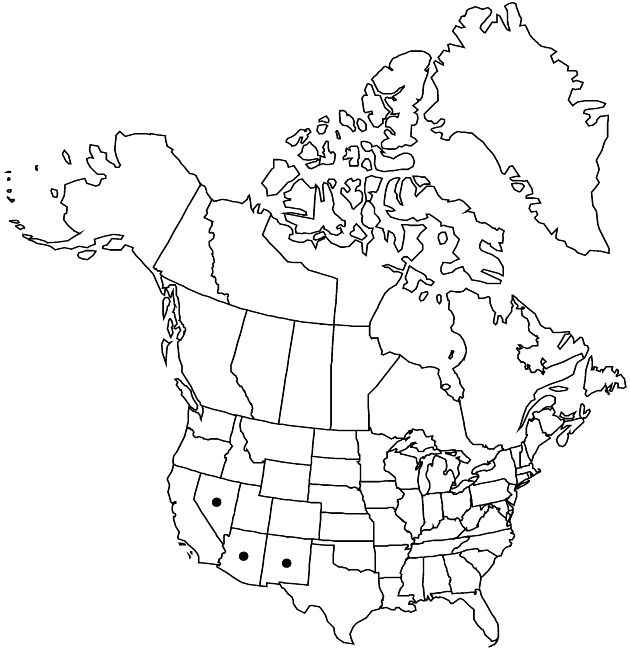Crepis runcinata subsp. barberi
Publ. Carnegie Inst. Wash. 504: 100. 1938.
Common names: Barber’s hawksbeard
Basionym: Crepis barberi Greenman Proc. Amer. Acad. Arts 40: 52. 1904
Plants 35–65 cm. Leaves: petioles narrowly winged; blades narrowly oblanceolate or linear, 0.5–2 cm wide, margins entire or retrorsely toothed or pinnately lobed (lobes lanceolate), faces glabrous (glaucous). Heads 3–7. Involucres 11–17 mm. Phyllaries lanceolate, apices acute, faces glabrous or sparsely tomentose proximally, eglandular. Cypselae dark-brown, 5–7 mm, not beaked; pappi 7–8 mm.
Phenology: Flowering Jun–Sep.
Habitat: Alkaline flats
Elevation: 1200–1300 m
Distribution

Ariz., Nev., N.Mex., Mexico (Chihuahua)
Discussion
Subspecies barberi is usually distinguished by relatively narrow leaves that are often entire or weakly dentate, scapiform stems, and glabrous phyllaries.
Selected References
None.
Lower Taxa
None.
"fine" is not a number.
... more about "Crepis runcinata subsp. barberi"
glabrous +
tailed +
introrse +
connate +
acute +
scarious +
developed +
absent +
hirsute +
papillate +
corymbiform +
persistent +
falling +
continuous +
decurrent +
linear;oblanceolate +
winged +
ribbed +
1;15 +
unequal +
filiform +
stigmatic +
barbellulate +
coarse +
absent +
reduced +
absent +
reduced +
Barber’s hawksbeard +
golden yellow +
monomorphic +
not beaked +
dark-brown +
curved +
dimorphic +
5mm;7mm +
straight +
eglandular +
distinct +
ligulate +
proximal +
20;50 +
bisexual +
dispersed +
appressed +
subsessile +
indeterminate +
3;7 +
homogamous +
surrounding +
turbinate-campanulate +
petiolate +
alternate +
basal +
toothed +
prickly +
scarious +
2-carpellate +
inferior +
attached +
anatropous +
white +
persistent +
falling +
coarse +
equal +
fine +
not bracteate +
inflated +
tough +
thick +
connate +
winged +
persistent +
subequal +
equal +
Publ. Carnegie Inst. Wash. +
1938 +
epaleate +
pitted +
convex;flat +
spiculate-roughened +
fibrous +
exalbuminous +
modifed +
1;2 +
Illustrated +
alternate +
branched +
scapiform +
2-branched +
hirsute +
papillate +
Crepis runcinata subsp. barberi +
Crepis runcinata +
subspecies +
perennial +